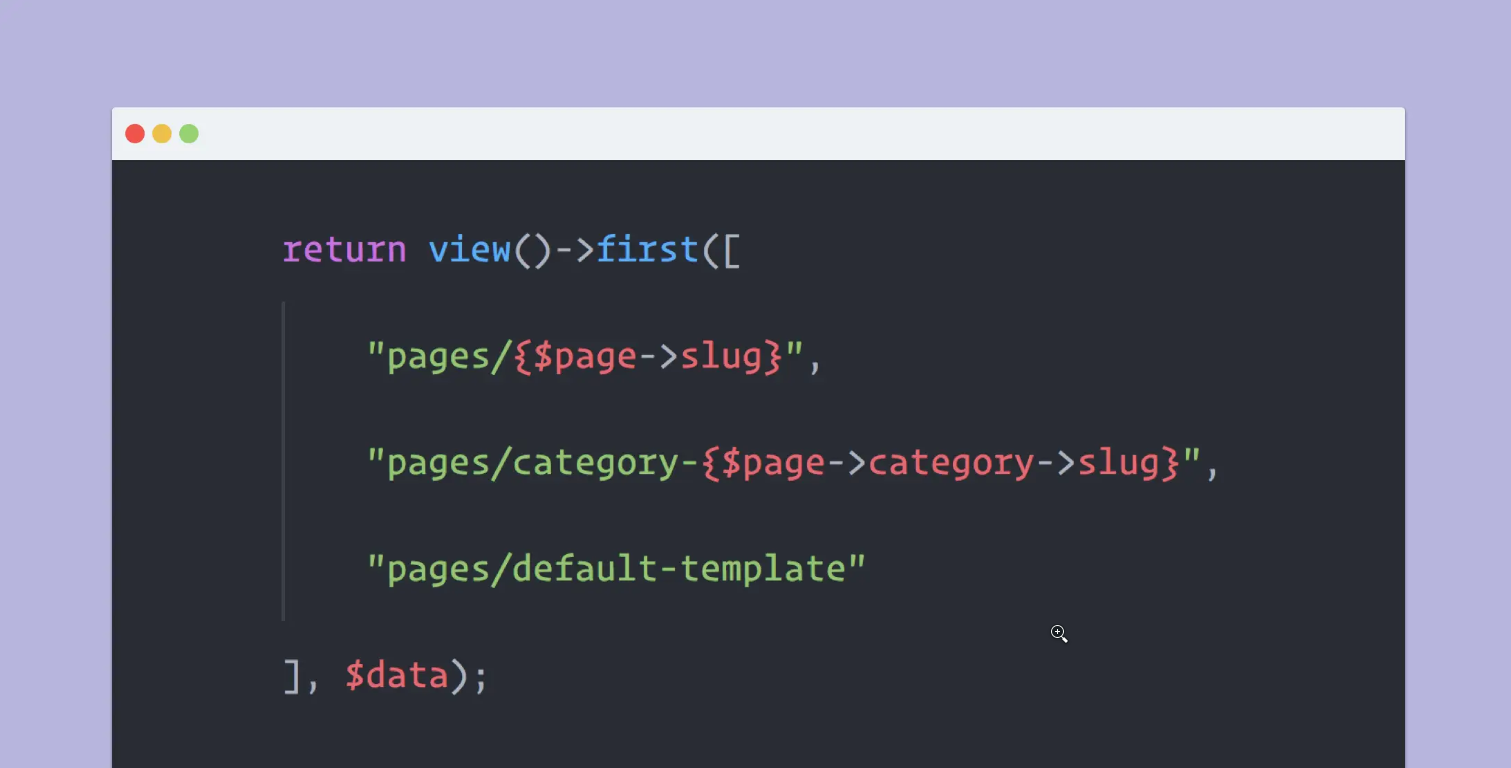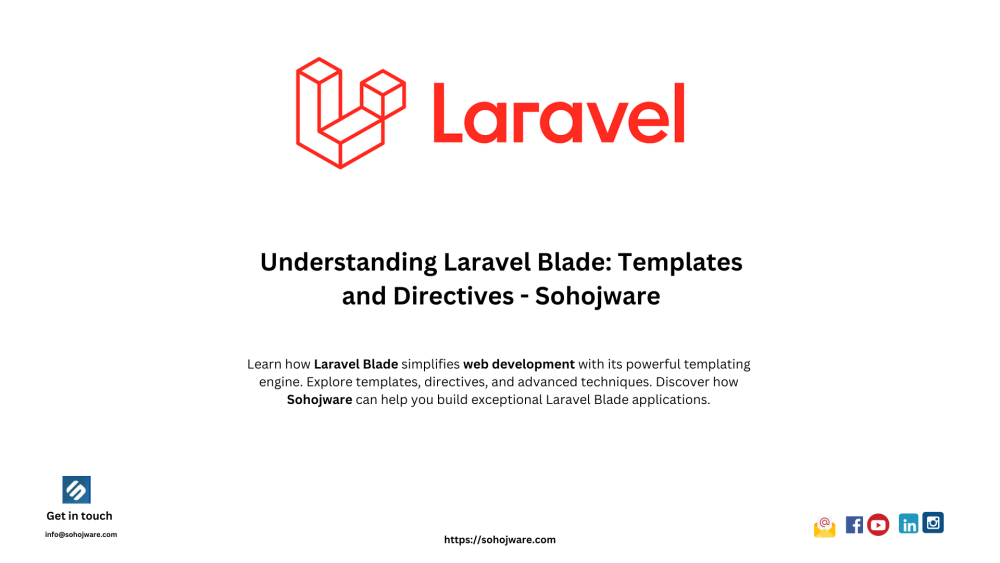Laravel Blade, a templating engine for the Laravel PHP framework, simplifies the process of creating dynamic and visually appealing web applications. It offers a clean syntax that integrates seamlessly with Laravel's features, allowing developers to focus on building exceptional user experiences. This article from Sohojware, a leading web development company, dives deep into the world of Laravel Blade, exploring its core functionalities – templates and directives.
Templates: The Foundation of Laravel Blade
Templates in Laravel Blade serve as the blueprints for your application's user interface. These Blade templates are essentially standard PHP files with the .blade.php extension. They provide a familiar and intuitive way to structure your application's views, separating presentation logic from business logic.

Here's a breakdown of how Blade templates work:
-
Content Sections: Blade templates are divided into sections using directives like @section and @endsection. These sections allow you to create reusable components, promoting code maintainability and reducing redundancy.
-
Layouts: Imagine a master page that serves as the foundation for all your application's views. This is precisely what Layouts are in Laravel Blade. You can define a layout template and extend it within other Blade templates, inheriting the common layout elements while customizing specific content sections.
-
Inheritance: Building upon layouts, Blade allows inheritance between templates. This enables you to create a base layout template with shared elements like headers, footers, and navigation bars. Individual views can then extend this layout, focusing solely on the content unique to each page.
Sohojware's experienced Laravel developers can help you leverage Blade templates effectively to craft well-organized and maintainable applications.
Directives: The Powerhouse of Blade Templates
Directives are special instructions embedded within Blade templates that extend their capabilities beyond basic HTML. These directives, identified by the @ symbol, interact with Laravel's functionalities to generate dynamic content.
Let's explore some commonly used Laravel Blade directives:
-
@yield: This directive is used within layouts to insert content from sections defined in views that extend the layout. It ensures that the appropriate content is displayed in the designated areas of your application's interface.
-
@section: As mentioned earlier, this directive marks the beginning of a reusable content section within a Blade template.
-
@endsection: This directive signifies the end of a content section defined using @section.
-
@include: This directive allows you to include another Blade template within the current template. This promotes code reusability and simplifies complex layouts.
-
@if, @else, @endif: These directives provide conditional logic within Blade templates. You can use them to display content based on specific conditions within your application.
-
@foreach, @endforeach: Laravel Blade offers powerful looping capabilities through these directives. You can iterate through collections of data and dynamically generate content for each item.
Sohojware's team of Laravel experts can guide you in mastering these directives and unlocking the full potential of Blade templating.
Beyond the Basics: Advanced Blade Techniques
While the core concepts of templates and directives form the foundation of Laravel Blade, there's a treasure trove of advanced techniques to further enhance your development experience. Here are a few noteworthy examples:
-
Slots: Slots provide an alternative approach to content sections, offering more granular control over where content is placed within a layout.
-
Components: Blade allows you to define reusable components that encapsulate both HTML structure and logic, promoting a more modular development approach.
-
Mixins: Mixins are reusable code blocks that can be included in multiple Blade templates, reducing code duplication and improving maintainability.
Sohojware's Laravel development services can empower you to leverage these advanced Blade techniques to build scalable and efficient web applications.
FAQs on Laravel Blade (Sohojware)
-
What are the benefits of using Laravel Blade?
Laravel Blade offers several advantages, including:
-
Clean and expressive syntax: Blade's syntax integrates seamlessly with PHP, making it easy to learn and use.
-
Separation of concerns: Blade templates separate presentation logic from business logic, promoting code maintainability.
-
Reusable components: Sections, layouts, and other features encourage code reusability, reducing development time and effort.
-
Dynamic content generation: Laravel Blade empowers you to create dynamic and interactive web applications.
-
Is Laravel Blade difficult to learn?
The core concepts of Laravel Blade are relatively easy to grasp, especially for developers with experience in PHP and templating engines. Sohojware's team can provide comprehensive guidance and support to help you master Blade effectively.
-
What are some real-world applications of Laravel Blade?
Laravel Blade is widely used to build various web applications, including:
-
E-commerce platforms: Blade's templating capabilities facilitate the creation of dynamic product catalogs, shopping carts, and checkout pages.
-
Content management systems (CMS): Blade simplifies the development of CMS interfaces, allowing content editors to easily manage website content.
-
Social media platforms: Blade can be used to build user profiles, news feeds, and other interactive features of social media applications.
-
Enterprise applications: Blade's flexibility and scalability make it suitable for developing complex enterprise-level web applications.
-
Can I use Laravel Blade with other PHP frameworks?
While Laravel Blade is primarily designed for Laravel, it's possible to integrate it into other PHP frameworks with some modifications. However, it's generally recommended to stick with Laravel for a seamless development experience.
-
How can Sohojware help me with Laravel Blade development?
Sohojware's team of experienced Laravel developers can provide comprehensive services related to Laravel Blade, including:
-
Custom template design: Our designers can create visually appealing and user-friendly templates tailored to your specific requirements.
-
Template optimization: We can optimize your Blade templates for performance and SEO.
-
Component development: We can build reusable components to streamline your development process.
-
Integration with other Laravel features: We can seamlessly integrate Blade with other Laravel functionalities like routing, authentication, and database interactions.
By partnering with Sohojware, you can leverage the power of Laravel Blade to create exceptional web applications that meet your business goals.
Conclusion
Laravel Blade is a powerful and versatile templating engine that simplifies the development of web applications. Its clean syntax, reusable components, and integration with Laravel's features make it a popular choice among developers. By understanding the core concepts of templates and directives, and exploring advanced techniques, you can unlock the full potential of Laravel Blade and build exceptional web applications.




